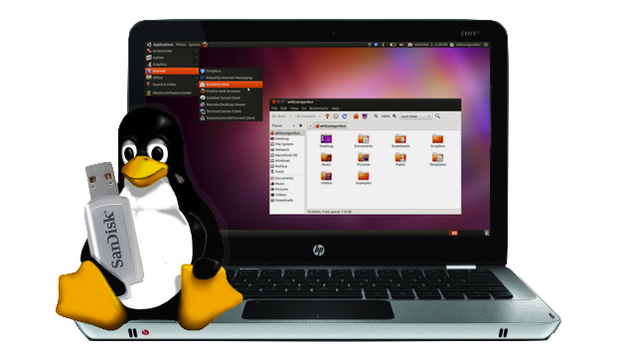
So you’ve decided to give Linux a shot, and you’ve
found a distribution that suits you. But how do you actually get it
installed? Here, we’ll show you how to create a live CD or USB drive,
boot into Linux, and install it on your system.
Whether you’ve played around with live CDs and drive partitioning
before or this is your first time, this guide will get you up and
running with Linux in just a little bit of time. It isn’t the most
straightforward process, but if you’re reading this, you’re probably
experienced enough with a computer to pull this off—it just takes a bit
of legwork.Note: If you’re installing Linux on a Windows computer, the process shouldn’t be too difficult (though you may want to brush up with our previous installation guide while you’re here). If you’re installing on a Mac or Hackintosh, however, you’ll need to perform a few extra steps, so definitely check out our triple booting guide for Macs and Hackintoshes, even if you aren’t triple booting.
Burning a Live CD or USB Stick
There are a few different methods for installing Linux on your computer, but generally, the most popular way is by downloading and burning a live CD (which has its own uses besides just installing Linux). I’ll show you how to do both here. The live CD method is probably easier, so go that route unless you’re on a netbook, or otherwise can’t burn a CD.The Live CD Method
You’ll have to get your live CD from the net, so head to your distribution’s home page (like Ubuntu’s)and look for a downloads section. Most will make it pretty easy to find. In addition, many sites will even host BitTorrent downloads of their distribution too, which will be a little faster—so if you see a link for “alternative downloads”, check that out. Otherwise you can probably download it directly from the site.Once your .ISO file is done downloading, open up your favorite burning program and burn that sucker to a blank CD. It’s pretty easy to do on Windows 7. Once it’s done burning, restart your computer. Wait for the “press any key to boot from CD” prompt, and then press a key. Once the CD boots up, it’ll give you the option to try out Linux or install it. Go ahead and click install. If you want to try it out, though, go for it—you’ll be able get a pretty good feel for what the desktop is like. When you’re ready to install, you can usually launch the installer right from the desktop.
The Live USB Method
Booting from your USB drive will take a few extra steps over the live CD method. While your computer is probably set to check your CD drive for bootable discs, it probably isn’t set to check your USB ports. So, with your newly created live USB stick plugged in, restart your computer and enter your BIOS setup (usually by hitting a key like Delete when you first start up—your computer’s splash screen will let you know when you first turn on your computer). Head over to the “Boot” section of your BIOS and find the section for changing your PC’s boot order. You’ll want to move your USB hard drive to the top of the list. Save your settings and exit the BIOS. When your computer reboots, it should take you to the Unetbootin menu, from which you can boot into your Linux live session (as described in the live CD method).
The Installation Process
The installation process will be slightly different for every distro, but in general setup should guide you through the necessary steps pretty easily. Assuming you’re installing Linux alongside another OS like Windows, though, there are a few things you’ll want to pay attention to.Partitioning Your Drive
When the installer asks you where you want to install Linux, you’ll have to partition your drive. We’ve gone through how to do this a few times before, and it’s usually pretty simple to add new partitions from the free space on your drive./. You’ll want to create the second partition for what’s called swap space.
This essentially helps your computer manage memory more effectively and
keeps it running fast. If you have a small amount of ram (one or two
GB), you’ll want your swap partition to be twice as large as the amount
of RAM you have. If you have 3 GB or more, you can probably just make a
swap partition that’s the same size as the amount of RAM you have.GRUB and Other Bootloaders
That’s it! To boot into your newly installed Linux partition, you just need to restart your computer. When you do, it’ll take you to the GRUB menu, which will let you choose whether to boot into Linux or Windows. From there, you can play around with your new Linux installation. It’ll probably come with quite a few apps installed, some you’ll recognize and some you won’t, and you can poke around in the settings and see what’s available to you. If you’re lucky, most of your hardware will work. If you’re unlucky, you’ll have a few quirks with your hardware, and if you’re really unlucky, your Wi-Fi won’t work out of the box and you’ll have to work just to get connected to the internet. Luckily, we’ll be talking all about getting your hardware working tomorrow, so check back with us then!





0 comments:
Post a Comment